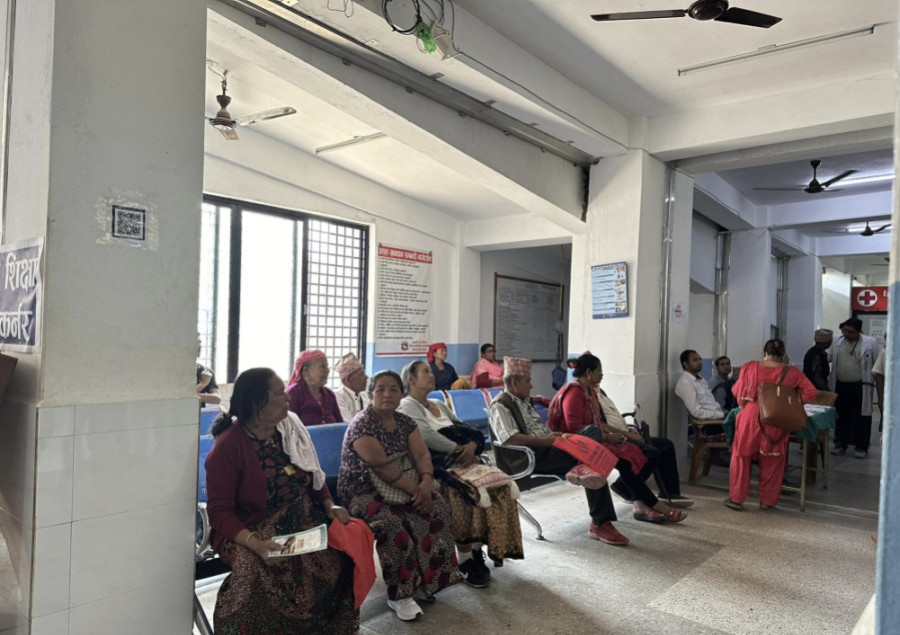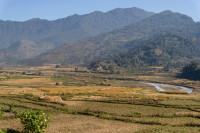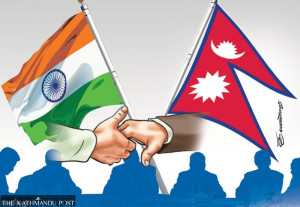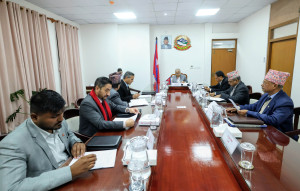Columns
Nepal’s health paradox
Despite progressive policies and increased financing, out-of-pocket spending remains alarmingly high.
Deepak Karki
In 1991, Nepal took a bold step towards modernising its health system by introducing its first comprehensive national health policy. Rooted in the principles of the Alma-Ata Declaration of 1978, the policy aimed to extend primary health care to rural populations, reduce maternal and child mortality, and ensure equitable access to essential services. It envisioned a decentralised, community-driven health system, with sub-health posts in every village and a referral system to guide patients to higher-level care.
Yet, 25 years since Nepal began tracking out-of-pocket (OOP) health expenditures, the country finds itself in a troubling paradox. Despite progressive policies, increased public and donor financing and measurable health gains, OOP spending remains alarmingly high between 50-60 percent. In comparison, the government has set a target to reduce it to 25 percent by 2030. This stagnation is not just a policy failure; it is a crisis.
Why measuring OOP matters
In low- and middle-income countries like Nepal, OOP spending is a critical metric. It reflects the financial burden borne directly by households at the point of care, often without reimbursement. High OOP rates are associated with catastrophic health expenditures (CHE), impoverishment and reduced access to timely care. In Nepal, nearly 17 percent of households face CHE exceeding 10 percent of total household consumption expenditure, and health costs push over 5.3 percent of people into poverty annually in 2022-23.
Policy intentions versus reality
Following the 1994 International Conference on Population and Development (ICPD), Nepal adopted a rights-based approach to health, culminating in the Second Long-Term Health Plan (1997–2017). This plan emphasised equity, decentralisation and community participation, with targets to reduce maternal mortality, increase life expectancy, and ensure essential health services within 30 minutes of travel for 90 percent of the population.
Despite these ambitions, policy implementation faltered. Free health care was introduced in 2008, and demand-side financing programmes like the Aama Surakshya Karyakram aimed to incentivise institutional deliveries. Yet, these interventions were fragmented, poorly coordinated and often underfunded.
The insurance illusion
Nepal’s experiment with voluntary health insurance schemes in the early 2000s revealed critical flaws: Low enrollment, poor (and poorly designed) benefit packages and weak financial viability. The 2012 review concluded that voluntary schemes were unsustainable and inequitable.
In 2016, Nepal launched the Social Health Insurance (SHI) to pool risks and reduce OOP. However, even after a decade, SHI has failed to meet its core objectives. Enrollment remains low, dropout rates are high, and service quality is inconsistent. By fiscal year 2024-25, only 27 percent of the population was enrolled, and the scheme increased administrative burdens without proportional resource growth.
The human cost
Nepal has made undeniable progress: Maternal mortality has declined, immunisation coverage has improved, and HIV and malaria infections have dropped. But the country struggles with non-communicable diseases (NCDs), mental health and injuries. These conditions require long-term care and expensive medications, driving up OOP costs. The 2022/23 Nepal Living Standards Survey IV shows that poor households rely on loans (32.3 percent) and subsidies (27.6 percent) to pay for communicable disease treatment. For NCDs, the burden is even heavier, with medicines costing over Rs10,000 per episode.
What went wrong?
Nepal’s failure to reduce OOP is rooted in systemic fragmentation, weak regulation and poor implementation. Health financing remains scattered across multiple ministries and vertical projects. Social protection schemes operate in silos, diluting their impact. Development partners have funded numerous disease-specific programmes such as The Global Fund, but these have not been integrated into a unified national system.
The voluntary health insurance scheme piloted in the early 2000s, was deemed unsustainable and inequitable in a 2012 review. The current SHI, introduced to address these gaps, suffers from low enrollment, high dropout rates and limited coverage. Even after a decade, it covers less than 10 percent of the population and contributes just 2.3 percent to total health spending.
Medicines and diagnostics account for the bulk of OOP costs, up to 60 percent for NCDs. Public facilities often face stockouts, pushing patients to expensive private providers. Regulatory oversight is weak, allowing unchecked pricing and poor service quality. The health system lacks robust authority to ensure accountability and value for money.
Financing without integration
Since 2004, Nepal has adopted a Sector-Wide Approach (SWAp) to harmonise donor and government efforts. Billions of rupees have been spent, both domestically and through bilateral and multilateral development partners such as the United States, the United Kingdom, Germany, WB, GFATM and Gavi. Yet, financing remains fragmented. Ministries run parallel social protection schemes without coordination. Vertical projects dominate, with little integration into national systems. More importantly, the GoN is waiving its leadership by allowing fragmentation to persist despite the commitments to the SWAp. Resources that could be pooled and utilised to promote coherent sectoral priorities are spread in pet projects, piecemeal approaches and traditional substitutional technical assistance that does not tackle the fundamental systemic issues.
The way forward
Nepal must confront this crisis with bold, evidence-based reforms. First, it needs a robust public financial management system to ensure efficient use of resources. Fragmented programmes must be integrated into a single, coherent national strategy. Ineffective and costly projects should be discontinued, and resources redirected to high-impact, community-defined interventions.
Second, the country must address the broader social and commercial determinants of health, poverty, education quality, poorly planned urbanisation and environmental risks. A strong regulatory authority is essential to oversee service quality, pricing and accountability across both public and private sectors.
Third, political and social accountability must be embedded in health governance. Decision-makers must improve their understanding of the basic principles of public health and evidence-driven policy. Communities should be empowered to define, monitor and evaluate services.
Nepal’s health system must evolve from a patchwork of projects to a coherent, accountable and equitable system. Nepal has the tools, the knowledge and the resources. What it needs now is the courage to make the right decisions. Reducing OOP is not just a technical challenge; it is a moral imperative. The health of a nation should not depend on the depth of its citizens’ pockets.




 7.12°C Kathmandu
7.12°C Kathmandu















